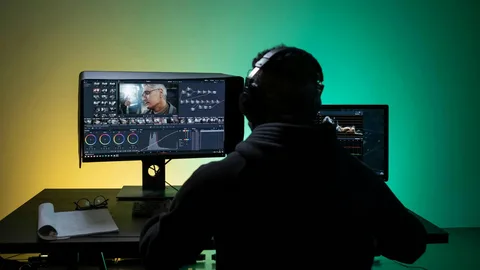In the digital age, video content dominates our screens, from short-form social media clips to cinematic masterpieces. One key factor that elevates these videos is the use of filters. While filters might seem like simple overlays, there’s a surprising depth of science and psychology behind their design and use. In this article, we’re exploring the science behind video editing filters: color, mood, and motion, and how each element shapes the viewer’s experience.
The Role of Color in Video Filters
Color is more than a visual component—it’s a psychological trigger. Different hues evoke specific emotions. For instance:
- Warm colors like red and orange often signify energy, passion, or danger.
- Cool colors like blue and green tend to evoke calmness, trust, or melancholy.
When exploring the science behind video editing filters: color, mood, and motion, it becomes evident that color grading is a powerful storytelling tool. Filters can subtly shift a scene’s palette to align with the narrative’s emotional tone. A romantic scene might use a soft pink or amber hue, while a thriller may lean into desaturated or high-contrast tones.
Mood Enhancement Through Filters
Mood is closely tied to visual perception. Filters help video editors create and reinforce the atmosphere of a scene. For example:
- Vintage filters add a nostalgic or retro vibe.
- Cinematic LUTs (Look-Up Tables) can make footage feel more dramatic or intense.
- High-contrast black and white might emphasize seriousness or historical context.
The science here involves both human psychology and visual perception. Our brains are wired to associate certain visuals with specific emotional responses, and filters exploit this connection to great effect.
When exploring the science behind video editing filters: color, mood, and motion, understanding mood manipulation is crucial to crafting compelling visuals.
Motion and Its Subtle Influence
Motion in video filters doesn’t always refer to moving images themselves, but also to how movement is enhanced or stylized through effects. Examples include:
- Motion blur filters that simulate fast movement or add drama.
- Stabilization filters that remove jittery footage, creating a smoother viewing experience.
- Speed ramping effects that adjust motion dynamically to emphasize action or emotion.
Motion also plays into our perception of realism and pace. Quick, jerky filters might induce anxiety or urgency, while slow, flowing effects can relax the viewer. These choices are deliberate and rooted in behavioral psychology.
The Intersection of Art and Science
Ultimately, exploring the science behind video editing filters: color, mood, and motion shows us how art and science converge. Video editors are not only creative artists but also visual psychologists. They employ scientific principles—such as color theory, emotional response, and visual dynamics—to engage, entertain, and inform audiences.
Conclusion
The next time you watch a beautifully edited video, take a moment to notice the filters. Behind every color choice, mood enhancement, or motion tweak, there’s a thoughtful process rooted in science and psychology. By exploring the science behind video editing filters: color, mood, and motion, we gain a deeper appreciation for the subtle techniques that make videos not just seen, but felt.


